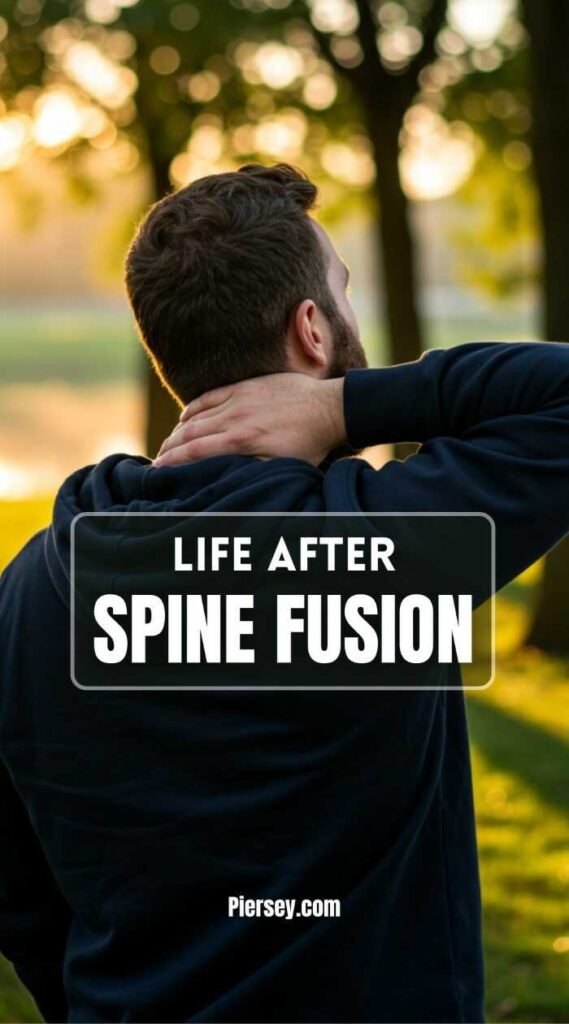If you’ve ever lived with constant neck pain — the kind that shoots down your arm, numbs your fingers, and keeps you awake at night — you’ll understand exactly why I finally said yes to spine surgery.
For years, I tried everything: painkillers, physiotherapy, stretches that did absolutely nothing… you name it. Nothing touched it. Eventually, an X-ray revealed what was behind it all — a C6-C7 disc protrusion pressing on my nerve. And after years of suffering, I had to face the words that made my stomach drop: anterior cervical discectomy and fusion (or ACDF).
At first, I thought, “Okay, sounds intense but doable.” Then I read the surgery risks. Infection. Windpipe damage. Paralysis. Even death — one in ten thousand. Yeah, that line made me close the booklet and stare into space for a solid minute. But honestly, living with the pain felt worse than the what-ifs. So, I booked the surgery.
👇 If you’d rather watch the video version, it’s right below 👇
The Weeks Before Surgery
Those two months leading up to the operation were pure mental chaos. I’d lie in bed thinking, “What if I can’t move my neck again? What if something goes wrong?” My anxiety was constant — like a background noise I couldn’t switch off. But deep down, I knew this was my shot at getting my life back.
When the big day came, everything felt surreal. I checked in at 8 a.m., changed into that lovely hospital gown (you know the one — open at the back for maximum dignity), and waited. Ten people in the operating theatre, bright lights everywhere, and the anaesthetist saying, “You’ll just feel sleepy.” Then boom — lights out.
When I woke up, it was over. Three hours had passed, and it felt like five seconds. My neck was sore, shoulders heavy, throat on fire. But the biggest shock? My bladder refused to wake up. I literally panicked when they mentioned a catheter — but thankfully, things “woke up” the next day. Lesson learned: morphine and general anaesthetic can really mess with your plumbing.


The First Six Weeks: Reality Hits
The first six weeks were… rough. I won’t sugarcoat it.
Pain between my shoulder blades felt like someone was twisting a wrench back there. I was given morphine and paracetamol, but even then, I couldn’t lift anything heavier than a kettle. Driving? Forget it. Sleeping? Only on my back, surrounded by pillows like a human burrito.
Then there was the swallowing issue. For a month, eating felt like dragging food through sandpaper. I had to cut everything into tiny bites and drink slowly, and even talking hurt. My voice sounded like I’d swallowed gravel.
The scar was another mental hurdle. At first, I couldn’t even look at it — raised, red, sore. But as the weeks passed, it began to heal and flatten out. I still remember that first nurse appointment a week later when they changed the dressing. I was terrified to even glance at it, but she reassured me it was healing perfectly.
And honestly, if you’re going through this yourself — patience is everything. There’s no shortcut through that first recovery stretch.
It reminded me a lot of the mental side of losing weight — that same test of consistency and faith when you can’t yet see the progress.
The 6-Week Mark: Tiny Wins
By six weeks, I started to feel slightly more human again. The pain was still there, but I could move better, and — hallelujah — I could drive again once I could turn my head without wincing. My surgeon warned me not to rush it, though. If you slam the brakes in an emergency before your fusion is stable, you risk undoing all that progress. So yeah, I waited until I was truly ready.
Returning to work on a phased schedule helped a lot. Just having structure again — getting up, moving around, talking to people — made a huge difference mentally. Recovery isn’t just physical; it’s emotional too.
That routine also helped me rebuild momentum in other areas of my life. Around the same time, I was still dealing with the aftereffects of my old eating habits — the ones I talked about in How a Carnivore Diet Gave Me Fatty Liver. It’s wild how much your body teaches you when you start paying attention — one small change really can flip everything else into motion.
The 3-Month Turning Point
Three months in, I was referred to physical therapy. I’ll admit, I wasn’t expecting much. My therapist handed me resistance bands and told me to do a few simple movements every day. At first, I thought, seriously? That’s it? But five minutes a day later, I started noticing something — less stiffness, more strength, and finally, the ability to turn my neck without feeling like it might snap.
It’s wild how small actions make huge progress over time. By the end of month three, I was honestly proud. Not just because I was improving physically, but because I stuck with it when it felt painfully slow.
Six Months Later: The Big Shift
At around six months, everything started clicking. My nerve pain reduced drastically. Shoulder tension eased up. Even my posture improved. For the first time in years, I could sleep through the night without pain shooting down my arm.
That was the moment I realized — this surgery wasn’t just fixing my neck; it was giving me a new start.
And that realization actually made me double down on improving other parts of my health. I started focusing more on inflammation, eating cleaner, and dropping excess weight — inspired by what I talked about in How I’m Losing 100 Pounds. Less pressure on the spine, less inflammation, better healing. It all connects.


The One-Year Mark
Now, one year later, I look back at those early days and just think… wow. The difference is night and day. The scar? Barely noticeable unless you know where to look. The pain? 90% gone. I still get the occasional stiffness, and some mild nerve tingling, but it’s nothing compared to what I used to live with.
Of course, ACDF isn’t a forever fix. I’ve learned that spinal fusions can cause extra stress on surrounding discs, meaning I might face more issues years down the line. But for now, I’m focused on keeping my spine healthy by losing weight and staying active — less inflammation, less pressure, better quality of life.
At my heaviest, I was around 260 pounds — and yeah, that kind of weight doesn’t exactly help your spine. But since switching to a high-carb, low-fat lifestyle and focusing on steady fat loss, I’ve noticed a huge improvement in recovery and energy. My diet’s doing as much for my back as the surgery did.
Looking Back
ACDF recovery isn’t easy. It’s uncomfortable, slow, and sometimes scary. But it’s also life-changing. If you’re about to go through it or supporting someone who is, my biggest piece of advice is this: trust the process, celebrate small wins, and don’t freak out when progress feels invisible. It’s happening — just quietly.
A year later, I’m stronger, more mobile, and finally living without that constant, radiating pain that used to define my days. I can honestly say: I’d do it all again.
Because yes, it’s tough — but waking up pain-free after years of agony? Absolutely worth it.

